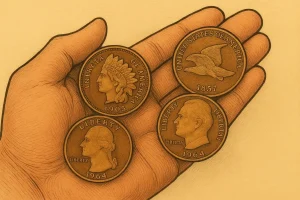In today’s fast-paced world, managing finances can be challenging, especially when it comes to tracking expenses and sticking to a budget. With so many financial obligations and desires, having the right tools in place can make all the difference. Enter budgeting apps—these digital aids are designed to simplify the process of monitoring spending, creating budgets, and ensuring that you stay on track with your financial goals. In this article, we’ll explore how budgeting apps work, their key features, and how they can empower you to take control of your monthly expenses.
Understanding Your Income and Expenses
The first step in effective budgeting is understanding where your money is coming from and where it’s going. Many budgeting apps offer a feature that allows users to input their income sources, whether it’s a salary, freelance work, or other income streams. Once your income is set, the app can help you track all your expenses automatically by connecting to your bank accounts, credit cards, or other financial institutions. This seamless integration ensures that every transaction is recorded in real-time, giving you an accurate picture of your spending habits.
Some apps take this a step further by categorizing each expense into predefined or customizable categories such as groceries, utilities, entertainment, and savings. By analyzing these categories, you can identify areas where you might be overspending and make necessary adjustments. For example, if you notice that a significant portion of your income is being spent on dining out, you might decide to allocate more funds to savings or prioritize cooking meals at home instead.

Tracking Your Daily Spending
Once you have a clear understanding of your income and expenses, the next step is to track your daily spending. This can be particularly challenging because small purchases, like a coffee or a quick trip to the store, can add up quickly. Budgeting apps often include features that alert you when you’re about to exceed your budget for a specific category. For instance, if you’ve set aside $100 for entertainment this month and you’ve already spent $80, the app might notify you before making another purchase.
In addition to real-time alerts, many apps provide detailed reports on your spending habits over time. These reports can be broken down by category, week, or month, allowing you to see trends and identify areas where you can cut back. For example, if you notice that you’re consistently overspending on utilities, you might look for ways to reduce energy consumption at home or switch to a more affordable provider.
Creating a Budget Plan That Works
With your income and expenses mapped out, it’s time to create a budget plan that aligns with your financial goals. Most budgeting apps offer tools to help you set limits on each category, ensuring that you’re not overspending in areas where it matters most. For example, you might allocate a certain percentage of your income to savings, retirement contributions, and emergency funds before addressing discretionary spending.
One of the key features of these apps is their ability to create a budget based on your inputs and then provide actionable steps to help you stick to it. Some apps even offer visual representations of your budget, such as pie charts or progress bars, which can make it easier to understand how your money is being used. Additionally, many apps allow you to set up recurring transfers to specific accounts, ensuring that your savings goals are met automatically.
Staying Disciplined with Reminders and Alerts
One of the biggest challenges when it comes to budgeting is staying disciplined. Even if you have a well-thought-out plan, it can be easy to veer off course without constant reminders. This is where budgeting apps shine—they often include features like budget alerts, expense tracking, and late payment notifications to keep you on track. For instance, if you’ve set aside money for a particular bill, the app might send you a reminder as the due date approaches, preventing late fees or penalties.
Some apps also allow you to set up savings goals and provide progress updates so you can see how much closer you’re getting to achieving them. This sense of accomplishment can be motivating and encourage you to stay focused on your financial objectives. Additionally, many apps offer insights and recommendations based on your spending habits, helping you make informed decisions about where to cut back or where to allocate more funds.
Reviewing Your Progress
Finally, it’s important to regularly review your progress and adjust your budget as needed. Budgeting isn’t a set-it-and-forget-it process; life happens, and your financial situation can change. By reviewing your spending habits and budget on a regular basis, you can ensure that your plan remains effective and aligned with your goals.
Most budgeting apps make it easy to review your progress through detailed reports, graphs, and charts. These tools provide a clear picture of how well you’re sticking to your budget and where there might be room for improvement. For example, if you’ve consistently met or exceeded your savings goal for several months, you might consider increasing that amount or setting new goals altogether.
In conclusion, budgeting apps are powerful tools that can help you take control of your finances, track your spending, and achieve your financial goals. By automating the process of tracking income and expenses, providing real-time insights, and offering customizable features, these apps make it easier than ever to manage your monthly expenses effectively. Whether you’re just starting out with budgeting or looking to refine your current approach, a good budgeting app can be an invaluable resource on your journey to financial freedom.



